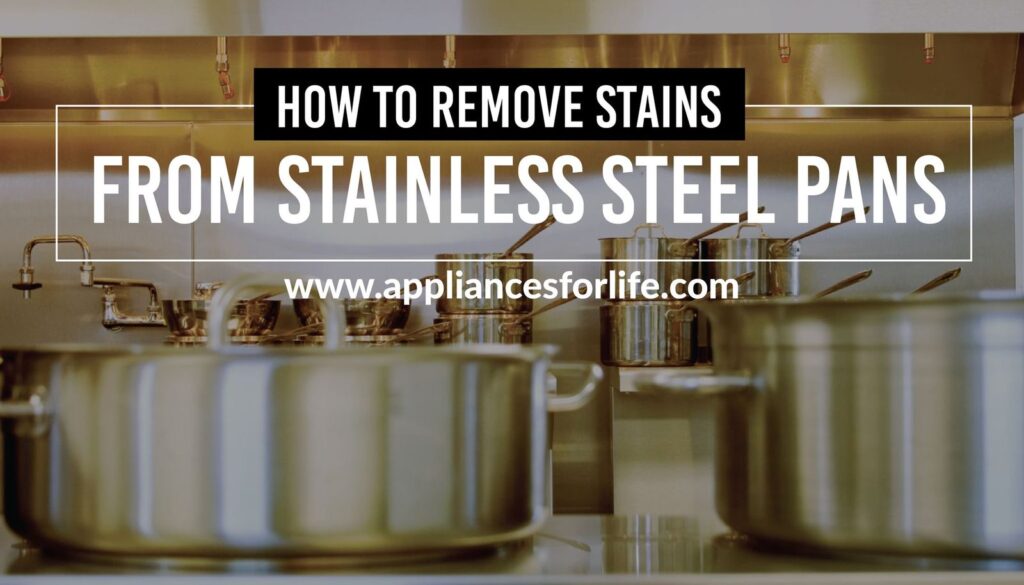- Cleaning stainless steel pans is not as hard as people have made it seem in recent times. Matter of fact, it’s as easy as cooking with them as long as the right techniques are put into good use. In this article, we’ll be looking at how to remove stains from your stainless steel pans.
- We’ll also be looking at the pros and cons of the stainless steel material and why it’s considered perhaps the best material for domestic usage.
Having stainless steel cookware in your kitchen always comes in handy. This material is one of the best you can get your hands on in the market and the fact that it’s built differently from cast iron or aluminium makes it even an obvious choice for obvious reasons. It’s no surprise that stainless steel is what people are turning to when they need cookware that can distribute heat evenly. With the way stainless steel pans are built, they help you maintain the right and a healthy amount of heat whenever you’re cooking. This way, you can be confident that your food will be cooked uniformly and you’ll have a great cooking result. On the flip side, cooking can go wrong sometimes and even your stainless steel cookware will get affected so badly that it’ll need extra attention and techniques to fix.
Table of Contents
ToggleOne of the reasons why people prefer stainless cookware for their cooking needs is because of its versatility. A stainless steel pan can be used to cook any type of food you can think of, as long as it can be cooked in cookware. Despite being most people’s choice, stainless steel pans also come with their own downsides. Although they are not non-stick (pans that don’t have food stuck in them), you’ll still have to put some methods into practice when cleaning them. If you don’t pay proper attention to stains and marks, stainless steel pans can begin to have stuck-on food. Just like with every other stainless steel domestic appliance/item, these pans also have the presence of chromium oxide which prevents rust and corrosion. Proper handling means that this chromium oxide is kept intact and the prevention of both corrosion and rust continues to be effective. However, mishandling these stainless steel pans will likely result in discoloration and many other stains.
As published by the Statista Research Department, this chart shows stainless steel production globally which was a total of 52.2 million metric tons in 2019. As shown in the chart, there has been a significant rise over the years in the production of stainless steel production on the global level.
Despite being non-stick, there are some food particles that can still stick to the bottom of stainless steel pans and get your stainless steel stained. There are several different ways to clean burnt stainless steel pans and stainless steel stain remover is an effective option. Before we get into how to remove stains from your stainless steel pans, let’s take a quick look at the kind of stains that could affect your stainless steel pans.
WHAT CAN STAIN STAINLESS STEEL?
We mentioned earlier that the name ‘stainless steel’ doesn’t make the steel indeed stainless. The material is perhaps the most durable as far as home items/appliances are concerned but even a material as durable as stainless steel is not immune to stains. There are different stains that can affect your stainless steel cookware and we’re going to be discussing each of them in detail below;
BURNT OIL/FOOD STAINS
This is by far the most common stain type with stainless steel cookware. It’s what almost everyone who uses stainless steel pans must have experienced before. The most annoying thing is that the stains might be so stubborn that you’ll be tempted to dispose of the affected pan(s) because you can’t quite get the stains to go away. A lot of people have been in this situation and more often than not, they’ve wondered how to clean burnt oil from their stainless steel pans. Burnt oil stains are so common when you process fried food a lot. It’s not something you should be bothered about because it will happen almost every time you try it so it’s not out of the ordinary. The best way to ensure your pan still maintains its natural state is to get these stains off it as soon as you can. Waiting for a longer time might result in a permanent stain which will push you to throw the cookware away.
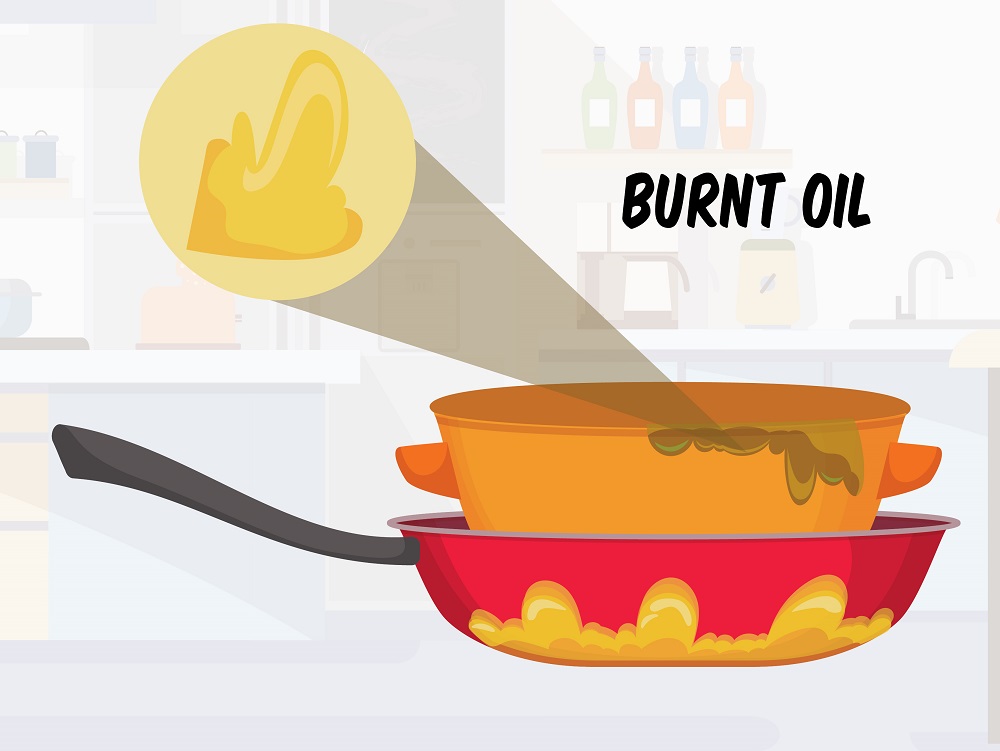 preventing rust in the first place is far better than trying to correct it. Later in this article, we’ll be discussing the different ways to remove rust stains from your stainless steel pan.
preventing rust in the first place is far better than trying to correct it. Later in this article, we’ll be discussing the different ways to remove rust stains from your stainless steel pan.
RUST
Rust is another common stain that can affect stainless steel pans and make them very unsafe to use. According to an article published on The Cookware Advisor, little rust may not pose any threat to the human body because it is oxidized iron. The only time it can pose a problem is when the body can’t effectively remove iron itself. In other words, one has to avoid the formation of rust as it’s one of the most common problems with stainless steel. Rust mostly appears on your stainless steel pan when the chromium oxide present in the stainless steel material has been tampered with. This might be due to trying to use abrasive cleaners or hard metal brush to clean your stainless steel pan. The good thing is that this stain can also be cleaned off. However, preventing rust in the first place is far better than trying to correct it. Later in this article, we’ll be discussing the different ways to remove rust stains from your stainless steel pan.
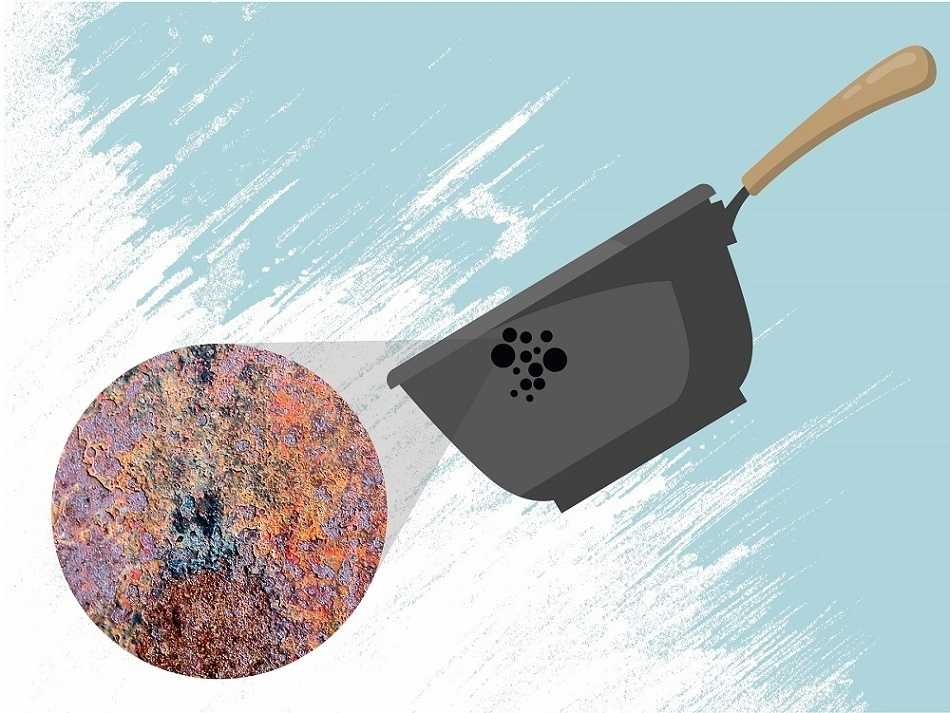
WHITE STAINS
Just like the two other stains we’ve discussed, white stains are also very common, especially when you cook with tap water which is the most common water source in the house. The water might not necessarily be hard water but the truth is that even tap water has a little portion of calcium bicarbonate in it. During the cooking process, this water breaks down the calcium bicarbonate into calcium carbonate which usually has a white color. These are the white stains that usually appear at the bottom of your pans but the good thing is that they are not harmful in any way.
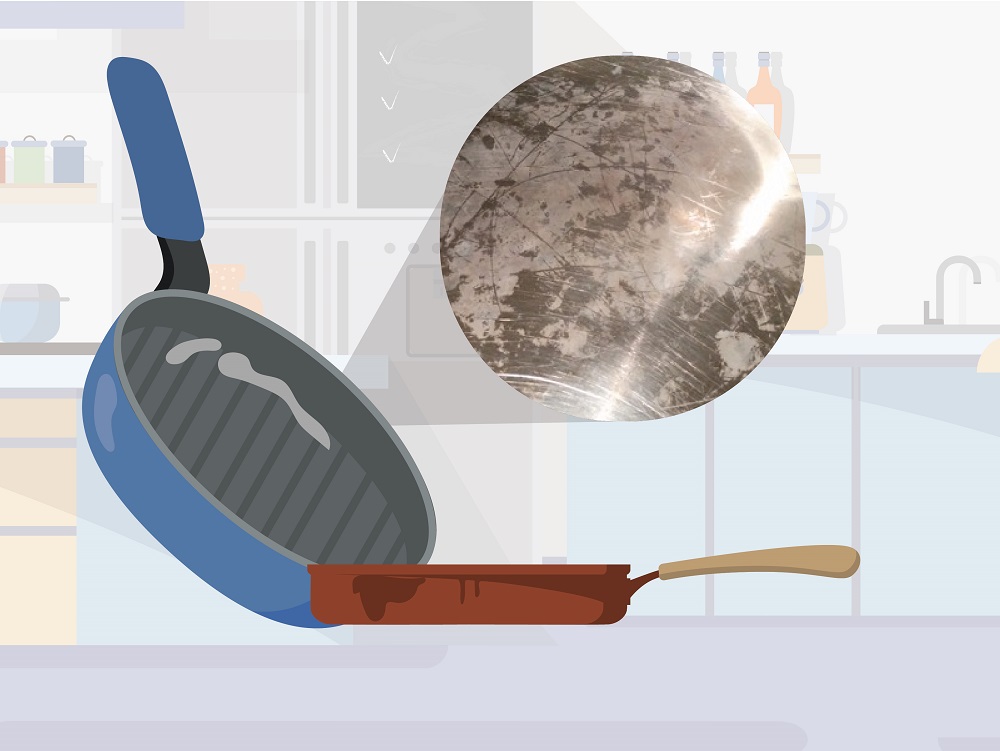
PROS AND CONS OF STAINLESS STEEL COOKWARE
Being one of the most popular materials, stainless steel also comes with its own advantages and advantages, and we’re about to discuss some of the most important ones below;
This chart shows the consumption of stainless steel in the United States as published by Statista. As seen in the chart, the consumption of stainless steel in the United States rose by significant figures in 2011 and 2013 before dropping back little margin in 2015 and 2016.
PROS
STAINLESS STEEL IS LONG-LASTING
One of the reasons why people prefer stainless steel cookware to other materials regardless of the price tags is because they last longer than the others. When you invest in stainless steel cookware and you look after it properly, you’ll realize you’ll spend little or nothing maintaining such cookware unless something really serious happens. The kind of confidence that comes with using stainless steel cookware is amazing.
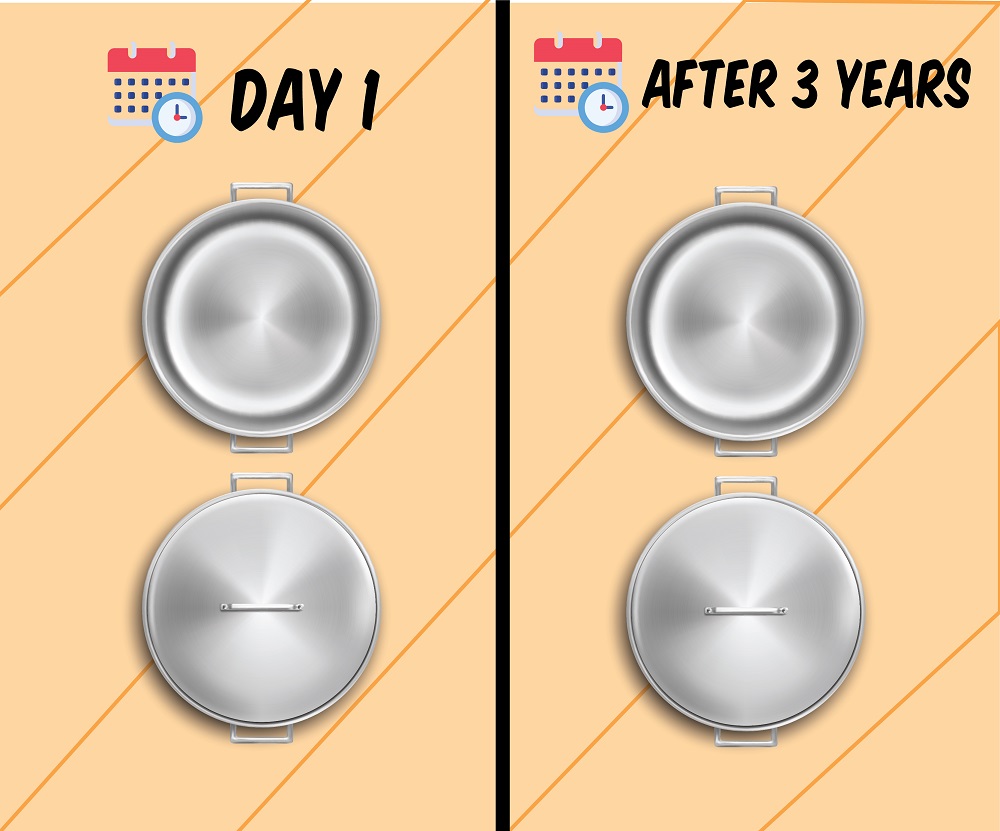
EASY TO CLEAN
Another thing people who use stainless steel cookware tend to enjoy is how easy it is to clean and maintain. This point is proved by the simple cleaning methods we’ll be discussing later in this article. A simple hot water and dish soap can clean a stained stainless steel pan effectively and that’s why most people opt for it. Even people who are just learning the cooking trade can easily get their hands on stainless steel pots and pans, and clean like they’ve been using them for a long time; that’s how easy they are to clean.
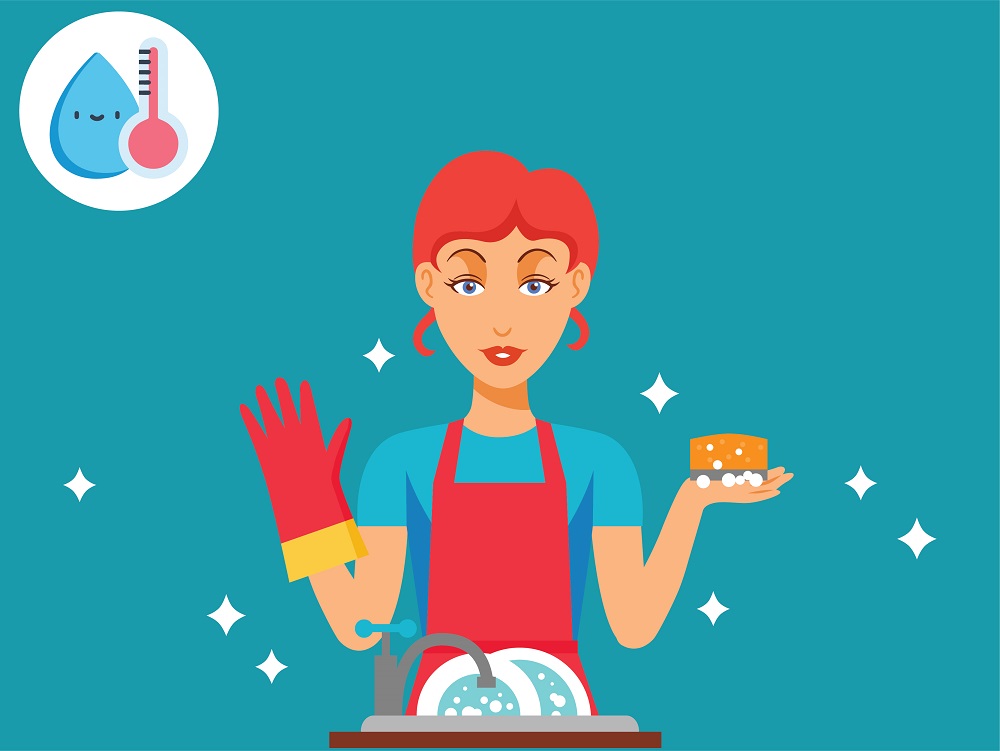
CONS
EASY TO CLEAN
The biggest drawback of stainless steel pots and pans is that they are generally more expensive than the other materials. At the initial stage, stainless steel cookware might cost more but when you look at the cost of maintaining the other materials, then you’ll realize you made the right call. Stainless steel cookware is very easy to clean and last longer than the other materials and that makes it a wise long-term choice, although the initial pricing might be discouraging.
HOW TO REMOVE STAINS FROM STAINLESS STEEL PANS
There are different simple ways to remove stains from your stainless steel pans and we’re going to be exploring some of them below. The good thing about these methods is that they are so simple, even for people who haven’t tried them before.
We also have an article on the best ways to remove stains from your stainless steel refrigerator. Click here to read it.
HOT WATER AND DISH SOAP
This is one of the basic methods and over the years, it has proved to be so effective. Its effectiveness is dependent on how quickly you use it as soon as you’re done cooking. This is what most people use for soft burnt food stains and it works perfectly.
DIRECTION
STEP 1: Boil water in a separate pot or alternatively, you can use your electric kettle.
STEP 2: Add this hot water to the affected cookware and leave it for at least 10 minutes so it can unsettle the burnt food that’s stuck in the pan.
STEP 3: After waiting for the hot water to do its job, dispose of the water and add clean water as well as the dish soap. Wash thoroughly and you’ll have your cookware sparkling again.
BAKING SODA AND SCOURING PAD
We all know baking soda is one of the most effective natural cleansers anyone can get their hands on. Whenever there’s a stain of any kind on your stainless steel pan, just turn to baking soda. If you’ve tried the first method (hot water and dish soap) and it didn’t work, then you might have to go for a stronger method which is the combination of baking soda and a scouring pad. This method is meant for tougher stains, especially when it comes to getting rid of burnt food.
DIRECTION
STEP 1: Mix the baking soda with water until you have a thick texture.
STEP 2: Apply this thick texture to the affected area (usually the bottom of the cookware) and leave it to settle in well for at least 15 minutes.
STEP 3: Proceed to scrub with your scouring pad (always make sure you’re using a new one or something close to new) until you’ve seen the last of the stains.
STEP 4: Now, it’s time to clean through with clean water and make sure there are no leftovers of the baking soda texture in the pan.
BAKING SODA AND VINEGAR
The final method we’ll be discussing in this article is one we’re all familiar with because baking soda and vinegar are two of the most effective cleaning solutions ever. The combination of the will help combat tougher stuck-on food particles.
DIRECTION
STEP 1: Add enough water to the affected cookware and make sure the water is covering the stuck-on food.
STEP 2: Put the cookware on a cooker and begin to boil. Proceed to add a cup of vinegar as well as 2 tablespoons baking soda to the boiling water.
STEP 3: Take the cookware of the cooker and leave it for about 5 minutes.
STEP 4: Empty the cookware and scrub the pan with a non-abrasive sponge until there’s no more stuck-on food in the cookware.
Frequently Asked Questions
1. Can you soak a stainless steel pan?
Yes, you can. One of the best ways to get stains off your stainless steel cookware is to make sure whatever cleaning solution (vinegar, baking soda, or even dishwasher detergent) is given enough time to work on the tough particles. This way, the cleaning will be effective and you’ll be left with sparkling cookware once again.
2. Why is my stainless steel pan discolored?
If you leave your cookware to overheat to the point where the food particles in it dry up and get burnt, then you might have your cookware change its usual color.
Conclusion
Now, we all know that stainless steel pans and pots are not as hard to clean as many people portray them to be. It’s about having the right techniques and we’ve highlighted some of the best methods in this article.
Always make sure you protect your skin if you’re using commercial cleaning products because most of them come with harmful chemicals. Our recommendation is that you sought natural cleaning methods, some of which we have discussed in this article.
02 HOURS 25 MINUTES
ESTIMATED TIME DESIGNING AND UPLOADING THIS ARTICLE
9 HOURS 15 MINUTES
ESTIMATED TIME RESEARCHING AND WRITING THIS ARTICLE
You Might Also Like

61 Effective Kitchen Organization Ideas
Our kitchen organization ideas will help you know where to put things in the kitchen, and how to organize kitchen appliances. The kitchen is one of the busiest places in the house, and a lot of people spend so much time in there that they

Should You Buy Extended Warranty on Appliances
If you’re purchasing appliances, warranties are not something you should overlook as they’re very important. Should you buy an extended warranty on appliances? Let’s find out in this article. Also in this article, we’re going to be looking at the difference between an extended warranty

How to Remove Rust from Stainless Steel Kettle?
If you own anything made of stainless steel, you’ll always want to make sure the stainless steel doesn’t get destroyed, especially by rust. In this article, we’ll be discussing how rust can destroy your stainless steel and what you can do to get rust out

How to Get Smells Out of Wood Cabinets?
If you have wood cabinets in your home, then there’s a need for proper maintenance, one of which is regular cleaning. However, sometimes, that might not be enough to prevent odd smells from creeping in. In this article, we’ll be looking at the different ways

How to Remove Grease from Stainless Steel Appliances?
It is not a surprise that at least one stainless steel appliance or item can now be found in every home; that’s how popular the material is. Demands have skyrocketed over the years and these precious appliances need to be protected at all cost because
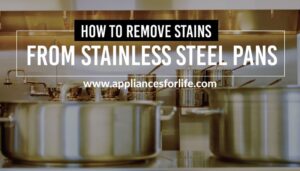
HOW TO REMOVE STAINS FROM STAINLESS STEEL PANS?
Cleaning stainless steel pans is not as hard as people have made it seem in recent times. Matter of fact, it’s as easy as cooking with them as long as the right techniques are put into good use. In this article, we’ll be looking at

HOW TO REMOVE CHEMICAL STAINS FROM STAINLESS STEEL SINK
As opposed to what many people of stainless steel sinks, they can also get stained too. Stainless sinks can be affected by different stains and we’ll be looking at each of those stains in this article. We’ll also be discussing the steps on how to

